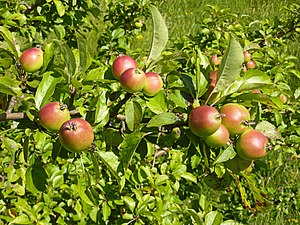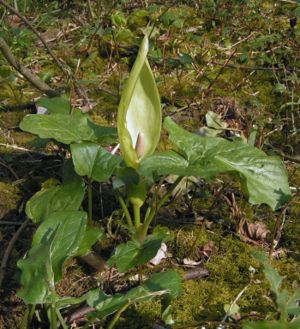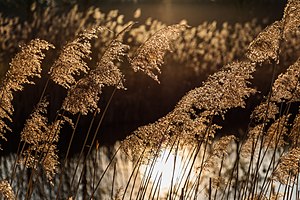Herbam Quae Gallice
Herbam quae Gallice... is a Gaulish plant knowledge database. Tables with information about Gaulish phytonyms (plant names) can be found below, and you can read more about the background of HqG and how it works at its blog article here. The page is best viewed on a personal computer to be able to see the plant photos. If on a mobile phone, it is recommended to rotate to wide-screen/landscape, although the pictures may still be very small.
Table of Contents
bilía
prinnoclutía ‘known for their timber’
| anvana | bonus | congennica | |
|---|---|---|---|
 |
acerabulus, *aceropulos Acer platanoides vel pseudoplatanus maple |
glōssāriīs (further reading). Cf. “opulos.” |
Fr. érable, cf. “opulos” infra |
 |
bagos Fagus beech |
Latin fagus |
|
 |
betua, betulla Betula birch |
Plīniō XVI, 74-75 |
Prov. & Cat. bez, Sp. biezo, OIr. beithe, W. bedw, OBr. bedu |
 |
cađđanos Quercus oak |
OFr. chasne, Pic. kaisne |
|
 |
dagla Pinus pine |
Sw. daille, Ale. dähle; Perh. also OIr. daig, Lith. deglas; but cf. also *delgos ‘thorn, pin, sting’ > OIr. delg, MW dala 1 |
|
 |
dervos Quercus oak |
Fr. derve, OFr. dervée, OBret. daeru, W. derw, OIr. derb; cf. also *daru- ‘oak’ > OIr. dair, W. dâr, OBret. & OCorn. dar |
|
 |
ivos Taxus baccata yew |
Toponyms, Anthroponyms |
|
 |
lemos, limos Ulmus elm |
Toponyms, Ethnonyms, Anthroponyms |
OIr. lem |
 |
*melatía, *melix Larix decidua larch |
Toponyms, Anthroponyms |
Fr. mélèze |
 |
onnos Fraxinus ash |
Toponyms, Anthroponyms |
|
 |
*opolos, opulos Acer maple |
Varrōne I, VIII 3 |
Fr. obier, It. loppio, opalo, perhaps Ogam OQOLI, OIr. [Mac]Ochaill |
 |
tannos Quercus ilex holm oak |
Toponyms, Anthroponyms |
cnuđđoclutía ‘known for their mast’
| anvana | bonus |
congennica |
|
|---|---|---|---|
 |
aballos Malus apple | glōssāriīs |
|
 |
agranios Prunus spinosa blackthorn |
OProv. aranhó, Cat. aranyó, Arag. arañon, Basq. arhan, OIr. áirne, OW. eirin, aeron, Bret. irinenn |
|
 |
cnoua, cnouilla Corylus hazel(nut) |
Anthroponyms |
OIr. cnú, W. cnau, Bret. knaou, cnusto- ‘harvest of hazelnuts, mast’? > OIr. cnúas |
 |
coslos, collos Corylus hazel(nut) |
Toponyms, Anthroponyms |
|
 |
dragena, -os Prunus spinosa? (black?)thorn |
Anthroponyms |
Pic. four-draine, Tess. dren ‘raspberry’, OIr. draigen, W. and Bret. draen, OCorn. drain |
 |
*glasina Vaccinium myrtillus myrtle, bilberry, blueberry | Friu. glazinis; cf. glađđon, *glastīno- ‘Isatis tinctoria’ > OIr. glasen, W. glesyn (also ‘borage’), OCorn. glesin [’sandix’ |
|
 |
odocos Sambucus (ebulus?) (dwarf?) elder | Mārcellō 2 VII 13 |
Prov. olègue, Lyon. ugo, Sp. yezgo *corrupta? |
vidoves ‘trees’ (small, shrubby)
| anvana | bonus |
congennica |
|
|---|---|---|---|
 |
*axtos, *axtinos Ulex furze, gorse; broom, buckthorn |
Maine and Norm. hédin, edin, OIr. aittenn, W. eithin, OBret. ethin ‘rusco’, OCorn. eythinen ‘ramnus’ |
|
 |
balanos < banatlos Genisteae familia? broom |
Fr. balai < OFr. balain, W. banadl, Bret. benal, balazn, OCorn. banathel |
|
 |
*colinos, -íos? Ilex (aquifolium?) holly |
OIr. cuilenn, W. celyn, Bret. quelenn, kelenn, OCorn. kelin ‘ulcia’ |
|
 |
eburos Sorbus rowan? yew? |
Ethnonyms, Toponyms, Anthroponyms |
Many meanings: OIr. ibar, W. efwr, Corn. evor, Bret. evor, MHGer. eberboum, Ger. Eberesche (cf. Schrijver’s argument for ‘rowan’ over ‘yew’) |
 |
salix? > -ica?, icos? 4 Salix willow, osier |
Toponyms, Anthroponyms |
OFr. saus(se), OIr. sail, W. helyg, Bret. haleg, Corn. helyk |
 |
sapos, -a?, sapavidus Abies alba? fir? var. conifers? |
Toponyms, Anthroponyms |
OFr. and Prov. sap, Latin sappīnus, W. sybwydd, HGer. sibuit |
 |
sparnos Crataegus (haw)thorn |
OBret. spern, Bret. sperenn, OCorn. spernic, Corn. spern; cf. *skʷiyat- |
|
 |
verna Alnus alder |
Theonyms(?), Toponyms, Anthroponyms (?) |
Fr. vergne, verne, Prov. and Pied. verna, Cat. vern, Occ. vèrnhe, OIr. fern; W., Bret., and Corn. gwern, OBret. gu(a)ern, OCorn. guern |
 |
vitus Salix? Lonicera? woody, twining plant |
Toponyms, Anthroponyms |
OIr. féith and W. gwden < *wēti-, OHGer. wîda; influenced by or related to Latin vītis? Meaning seems imprecise and/or regional. |
 |
vroíca, *vroicaria Ericaceae familia?, Calluna vulgaris? heather |
Ogam VRAICCI, OIr. froích, W. grug; *wroica, *wroicāriā > Late Gaulish *brūca, *brūcāria; *wroicanā; See notes for Gaulish descendants. 5 |
luđđoves
deproteíi ‘edible’
| anvana | bonus | congennica | |
|---|---|---|---|
 |
arinca Triticum (dicoccum?) a type of wheat (emmer?)† |
Plīniō XVIII, 81 |
|
 |
berura, berula Nasturtium officinale, Berula? (water)cress, brooklime? scurvy-grass? water parsnip? |
Mārcellō XXXVI 51 |
Fr. berle ‘water parsnip’, Prov. berlo, Sp. berro, OIr. birar, W. berwr, OBret. beror, Bret. and Corn. beler |
 |
bracis Triticum dicoccum? Hordeum vulgare? malt; emmer? barley? 6 |
Fr. brai, brasser ‘to brew’ (< *braciāre), OIr. mraich, braich, W. and OCorn. brag, Bret. bragez |
|
 |
cremos Allium garlic |
Toponyms, Anthroponyms |
|
 |
cularos, *carulos Apiaceae vel Cucurbitaceae familia, Saxifraga, etc. edible umbellifer, saxifrage, gourds, etc. |
OIr. cularán ‘cucumber, edible umbelliferous plant’, curar ‘Conpodium majus’, W. cylor ‘id., saxifrage’, Bret. keler, coloren |
linnas talamanos ‘ground covers’
| anvana | bonus | congennica | |
|---|---|---|---|
 |
boluđđerron, *-elon? Hedera helix ivy |
Ps.-Āpulēiō XCIX 27 |
|
 |
dravoca, drava Lolium (temulentum?), Arctium lappa? rye grass, darnel, cockel, burdock?, lappa? |
W. drewg, Lat. dravoca, OFr. droe, drave, Fr. droue, druive, Lomb. droga; Fr. dragée < *drauocāta |
|
 |
ratis Polypodiopsida classis fern |
||
 |
suibitis Hedera helix ivy |
Ps.-Dioscuride 2, 126 |
|
 |
visumaros Trifolium clover, shamrock |
Mārcellō III 9 |
cf. OIr. semar, etymological treatment forthcoming... |
blatoves ‘flowers’
| anvana | bonus | congennica | |
|---|---|---|---|
 |
albolon Mentha pulegium pennyroyal |
Ps.-Dioscuride 3, 31 |
|
 |
alus, alos Symphytum officinale comfrey |
OIt. and Venetian alo |
|
 |
bugíos, -illos, -illonis Hyacinthoides?, Campanula? blue flower? |
Theonyms(?), Toponyms, Anthroponyms; Perhaps hyacinth or bluebell |
OIr. buga |
 |
calliomarcos Tussilago farfara coltsfoot |
Mārcellō XVI 101 |
cf. epocallion; cf. calques such as Lat. ungula caballina > It. ugna di cavallo, Fr. pas-d’âne, sabot-de-cheval, Germ. Eselfuss, Huflattich, Eng. ‘coltsfoot’ |
 |
calocatanos Papaver (wild) poppy |
Mārcellō XX 68 |
cf. Late Latin catanus ‘juniper’ |
 |
epocallion Tussilago farfara coltsfoot |
glōssāriīs |
cf. calliomarcos |
 |
gilaros Thymus serpyllum wild thyme |
Mārcellō XI 10 |
|
 |
glađđon Isatis tinctoria woad |
||
 |
pempedula Potentilla (reptans?) cinquefoil |
Ps.-Āpulēiō II 32 |
cf. calques Lat. quinquefolium, Gr. πεντάφυλλον |
 |
rodaron Filipendula? (ulmaria?) spiraea?, meadowsweet? |
Plīniō XXIV, 172 |
|
 |
sapana Anagallis arvensis (a.k.a. A. phoenicea) scarlet pimpernel |
Ps.-Dioscuride 2, 178 |
lubías ‘herbs’
| anvana | bonus | congennica | |
|---|---|---|---|
 |
anepsa Veratrum album white hellebore |
Ps.-Dioscuride 4, 148 |
|
 |
belenion, belenuntia, bellinuncíon Hyoscyamus? henbane, Apollinaris |
Ps.-Āpulēiō IV 26, 30 |
Root with same meaning also found in Germanic and Slavic. |
 |
bluđđagiu obscura Earache healing herb, from wetlands or moist soils 7 |
||
 |
bricumos, briginos?, *brigantios? Artemisia mugwort, artemisia |
Mārcellō XXVI 41 |
Valtellina (Lombardy) dialectal briánz ‘absinthe’ < *brigantios |
 |
gigaros Arum (maculatum?) friar’s cowl, jack-in-the-pulpit, arum |
Ps.-Dioscuride 2, 167 |
Tuscan gigaro, gichero |
 |
lagonon Veratrum album white hellebore |
Ps.-Dioscuride 4, 148 |
|
 |
limeon obscura; Ranunculus? Aconitum? poisonous plant; buttercup? wolfsbane? |
Plīniō XXVII, 101 |
|
 |
titumen Artemisia vulgaris mugwort, artemisia |
Ps.-Āpulēiō X 18 |
|
 |
vernetos obscura plant for healing earaches 8 |
Mārcellō IX 131 |
anací ‘wetland’
| anvana | bonus | congennica | |
|---|---|---|---|
 |
adarces, adarca obscura reed foam |
Dioscuride V, CXXXVI (119?) |
|
 |
baditis Nymphaeaceae familia water lilly |
Mārcellō XXXIII 63 |
Meaning ‘submerging, quenching’: OIr. bádud, W. boddi, Bret. beuzi (also means ‘swimming’) |
 |
beliocandos Myriophyllum (spicatum?) water milfoil |
Ps.-Āpulēiō LXXXIX 13 |
|
 |
canos -a? obscura; Phragmites australis? reed |
Theonyms(?), Toponyms, Anthroponyms |
W. cawn |
 |
samolos obscura Samolus valerandi? wetland plant, druidic panacaea for eye afflictions |
Plīniō XXIV, 104 |
anđđerí (uncertain ones)
The following entries are set apart from those above for having uncertain etymologies. Further study may elucidate some of these entries such that they could be grouped with those above. As it stands now, with few exceptions the following entries are all restricted to literary sources. There is no known evidence of their use in placenames or personal names, nor do they have clear cognates with other Indo-European terms for comparison. A few of these also have confusing, questionable, or possibly corrupted, forms. Still, each of these is attested as being Gaulish and has not been ruled out as such. An article that details some possible etymologies as well as hypothetically corrected forms may be forthcoming later.
trees
- ducone ‘dwarf elder’
- ebucone ‘dwarf elder’
- ercinon, erxinon ‘oak’
- iupicellos 9 ‘Juniperus communis, oxycedrus’
- pados ‘Prunus padus?’
- scobies ‘Sambucus nigra’
- usuben ‘Danae racemosa’
flowers
- amellus ‘Aster amellus’
- corna ‘Glaucium corniculatum’
- exacon ‘Centaurium erythraea’
- fesmerion? ‘Althaea officinalis’
- gallisopsis? ‘Mentha pulegium (move this and albolon to ‘herbs’?)’
- vigentia, oyigneta ‘Tanacetum parthenium’
- sister, sistrameor ‘Meum athamanticum’
- thona ‘Chelidonium majus’
- ura ‘Orchis’
food
- asia corrected to *sasyo- > haidd, heiz ‘barley’ (see under “Common Celtic” below)
- legaricon ‘legumes (vesce, lentille, gesse, gessette)’
- vela ‘Sisymbrium officinale’
ground cover
- tarbidolotius < tarvidolotios? ‘bull-tongue, Plantago major’
herbs
- betidolen corrected to *bVtVdula ‘sticky-plant? (related to bitumen?) Arctium lappa’
- combreton ‘comfrey?’
- gelasone ‘Gnaphalium, Filago’
- mentasone ‘Calamintha’
- ponem ‘Artemisia vulgaris’
- scubulon, -os ‘Solanum nigrum’
- selago ‘Huperzia selago? Juniperus sabina?’
- vettonica ‘Betonica officinalis’
wetland plants
- iurbaron ‘Beta maritima?’
- peperacion ‘Iris pseudacorus’
- taurux ‘Potamogeton’
Reference:
- André, J. (1985). Noms de plantes gaulois ou prétendus gaulois dans les textes grecs et latins. Études Celtiques, 22(1), 179–198.
kitukeltīkā (Common Celtic)
Below are some more phytonyms not listed above, but reconstructed from Insular terminology (and often with comparanda in Germanic or occasionally Latin). These are generally likely to come from a non-Indo-European substratum in Western Europe. Note, there are many plant terms like “grain,” “bush,” “grass,” “bud,” “flower,” etc. that are excluded, as the purpose of HqG is to collect potential species names. All of these should be understood to be “double-check” material. They are derived from the University of Wales word list (2004), Matasović (2009), and Koch (2020). The UoW word list is merely a PDF draft that’s been made publicly available, not a finalized or reviewed publication. So I am including it here for its much greater breadth, in spite of it not being a citable source for formal academic work. Its reconstructions are only tentative, although I believe all reconstructions should be treated as such, including in peer-reviewed, reputable academic publications.
- *alanno- ‘coltsfoot’
- *ambranro-windā ‘white wort, chamomile, feverfew, mayweed’
- *amφellā ‘starwort, Aster amellus’
- *arawar, *arawen ‘grain, cereal, meadowsweet’
- *arbīno- ‘turnip, rape’
- *akar(n)o- ‘maple’
- *belisā ‘henbane’
- *brugn-inyo- ‘rushes’
- *dristi- ‘bramble, thornbush’
- *dol-isko- ‘seaweed, Palmaria palmata, fucus palmatus’
- *dubu-litso- ‘horse-parsley’
- *el-awyo- ‘(water) lily’
- *φedenno- ‘ivy’
- *φuktākā ‘pine’
- *ginso- ‘pine, fir’
- *karīso- ‘sorbus, rose hips, medlar trees’
- *karotīno- ‘rowan, quick-beam’
- *kekitā ‘hemlock’
- *kolino- ‘holly tree’
- *konnallo- ‘cane’
- *korkkyo- ‘oats’
- *korokasto-, *korVsto- ‘reed, bulrush’
- *malxyo- ‘clover, trefoil, violet’
- *nenado-, ninati- ‘nettle’
- *nino- ‘ash-tree’
- *sasyo- ‘barley’
- *semin(o)- ‘rush, read, cornstalk’
- *sento-litano- ‘plantain, waybread (way-broad)’
- *sex-skā/i- ‘rushes, sedge’
- *skʷiyat- ‘hawthorn’
- *smero- ‘blackberry, mulberry’
- *subi- ‘strawberry’
- *talko-, *talskV- ‘oats, bran’
- *tawalo- ‘dock, Rumex’
- *tellyā, tillV-? ‘linden’
- *toryVnā ‘wheat’
- *wimonā, wimmāni-? ‘sea weed’
- *yewā ‘barley’
- *yoyni- ‘rushes, reed, juniper?’
Proto-Celtic References:
- Koch, J. (2020). Celto-Germanic: Later Prehistory and Post-Proto-Indo-European vocabulary in the North and West. Canolfan Uwchefrydiau Cymreig a Cheltaidd Prifysgol Cymru.
- Matasović, R. (2009). Etymological dictionary of Proto-Celtic. Brill.
- English–Proto-Celtic Word-list with attested comparanda. (2004). University of Wales Centre for Advanced Welsh & Celtic Studies.
dirugnatos (notes)
- Dagla: Hubschmied indicates many languages use the same term for ‘torch, flame’ as they do for ‘pine’, connecting the term also to OIr. daig, Lith. deglas (a Gaulish borrowing?). (back)
- The 1916 Niedermann edition of Marcellus’ De medicamentis is unavailable, which is why an older edition is referenced here. (back)
- Pseudo-Dioscorides’ Ex/De herbis feminis does not appear to be available as a separate work, as it has long been combined with Pseudo-Apuleius to form Herbarius. The citations here are what’s given by André, although they don’t seem to correspond to the Herbarius edition linked to here. It seems that the entries by Ps.-Apuleius include those of -Dioscorides for the most part (though this will need to be double-checked). (back)
- *Salix* may have been originally a consonant stem, but later vocalized as salica; salicos is more dubious (the -o- in Salicogena would be the insertion of a composition vowel, or the use of the genitive form for the purposes of compounding consonant stems, cf. *Cunobelinus*). (back)
- *Wroica > Late Gaulish brūca > Bret. brug, Cat. bruc, It. brugo, Prov. and Occ. bruga, Milan. brüg; *wroicāriā > Fr. bruyère, Prov. bruguieira, Cat. bruguera; wroicanā > Mayenne brikane. (back)
- Malt, grain for brewing beer; Also said to perhaps be an emmer, although curmi is typically translated as ‘barley beer’ (barley being Hordeum vulgare on account of its meaning in modern reflexes. Will need to research the history of barley beer to determine which species (if either) is more plausible. (back)
- Ranunculus has been proposed, though I’m uncertain it’s useful for treating earaches. Sweetflag is known for that, but does not have a wide distribution in France. (back)
- F. alnus (pictured) has been suggested for its similar medicinal use and name (cf. verna), but Marcellus seems to be describing an herb, not a tree. (back)
- Iupicellus ‘juniper’ (note: Pliny describes in Liber XVI the cedar as suitable “club wood.” He goes on to describe the juniper as even harder wood than the cedar. This could explain the root -cella ‘strike?’, cf. Sucellos the mallet-wielding god). (back)
Abbreviations
O prefix denotes “old,” M “Middle.”
- Ale. Alemannic
- Arag. Aragonese
- Basq. Basque
- Bret. Breton
- Cat. Catalan
- Corn. Cornish
- Fr. French
- Friu. Friulian
- Ir. Irish
- It. Italian
- Lith. Lithuanian
- Lomb. Lombard
- Lyon. Lyonnais
- Milan. Milanese
- HGer. High German
- Norm. Norman
- Occ. Occitan
- Pic. Picard
- Pied. Piedmontese
- Prov. Provençal
- Sp. Spanish
- Sw. Swiss
- Tess. Tessin
- W. Welsh
saneđđí
- marcus terentius varro · de re rustica · a. XXXVI ante. aer. vulg. · reate italiae
- pedanius dioscurides · de materia medica · a. LXX aer. vulg. · anazarbi ciliciae
- gaius plinius secundus · naturalis historia · a. LXXVII aer. vulg. · stabiis campaniae
- pseudoapuleius · herbarius · saec. IV aer. vulg. · obscura
- marcellus empiricus · de medicamentis liber · saec. IV ad V aer. vulg. · burdigalense galliae
- pseudodioscorides · liber medicinae ex herbis feminis · ante saec. VI aer. vulg. · europae meridianae
- anonymus · corpus (glossarium) · saec. VIII aer. vulg. · cantiacorum brittaniae
- anonymus · de nominibus gallicis · saec. VIII aer. vulg. · abbatia elnonensis galliae
- Galen
- Pseudo-Aristotle De plantis
